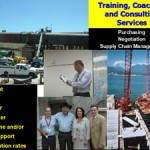Why the Fascination of Purchasing with Cost Drivers?

Robert Menard, Certified Purchasing Professional, Certified Professional Purchasing Consultant, Certified Green Purchasing Professional
Sophisticated purchasing organizations continuously engage in Cost Analysis. Cost Analysis provides the raw material for Cost Drivers. Let’s explore how these concepts are related because they are at the heart of our profession.
In its basic form, Cost Analysis involves breaking down the components costs of goods and services. For example, consider this table of cost breakdown for a telecommunication cable bought for $2.00/lf.
|
Telecommunications Cable $2.00/LF |
|||
| Raw Material | Copper
Polyester PVC Sub Total |
40% 5% 15% 60% |
$0.80 $0.10 $0.30 $1.20 |
| Production | Labor
Indirect Subcontract Sub Total |
10% 10% 10% 30% |
$0.20 $0.20 $0.20 $0.60 |
| O/H +Profit | Sub Total |
10% |
$0.20 |
|
TOTALS |
100% |
$2.00 |
|
It is obvious at a glance that the raw mat is the most cost intensive of the three rows in this simplified model. Further, of the raw mat, copper is by far the most significant. Therefore, in this example of telecommunication cable, copper is the greatest Cost Driver for this purchase. In order for us to manage costs, therefore, we must become more expert in the copper market.
A threshold question to answer about copper is how is it priced? More information is available on Price Analysis here. Staying with Cost Analysis, we must understand that the price is copper is established daily on exchanges around the world. The two most famous are the London Metals Exchange (LME) and the New York Mercantile Commodities Exchange .
We can use information from the exchanges, publications, or internet sources to plot the price patterns of any commodity like meat, orange juice, cocoa, coal, oil, and dozens of other raw materials. Buyers can use the trends to make informed decisions about projections into the future. This type of aggressive cost management, in some cases, leads buyers to purchase insurance such as the buying or selling of futures contracts. The giants of the transportation industry offer a clear illustration. Virtually all the major airlines, railroads, and package couriers offset the risk posed by higher or lower motor fuel costs by hedging with futures contracts for diesel, gasoline, natural gas, and jet A.
For folks new to Cost Analysis, the above copper example is straight forward. A more challenging issue is posed when the cost driver is not apparent or unknown. To illustrate this situation, let’s take the example of the food or pharmaceutical industries. For clarity, we shall stay with the metals commodity so as not to introduce too many variables at one time.
TheUnitd States Food and Drug Administration standards require 300 series stainless steel (austenitic) because of cleanliness, and hygienic superior characteristics of the material. A prized alloy for its general applicability in the 300 series is 316L (L for low carbon). Before we can understand the cost drivers of 316L, we must understand the chemistry of this alloy. No doubt, we all remember the Mendeleev periodic chart from high school chemistry (semi-smile). Seriously, the skilled purchasing pro must be conversant with the natural sciences such as mathematics and chemistry. In the case of stainless steel 316L grade, examine this specification. The chemical elements and allowable tolerances are stated in the below TABLE I.
TABLE I
| Sym. | % min | % max |
| C | 0.0 | 0.030 |
| Mn | 0.0 | 2.000 |
| Si | 0.0 | 0.750 |
| P | 0.0 | 0.045 |
| S | 0.0 | 0.030 |
| Cr | 16.0 | 18.000 |
| Mo | 2.0 | 3.000 |
| Ni | 10.0 | 14.000 |
| N | 0.0 | 0.100 |
While this specification tells us the exact chemical composition of the alloy, it does little to identify the Cost Drivers. TABLE II begins to clarify the picture somewhat as we see “theoretical” prices per pound for each elemental constituent. Is there now sufficient information to identify the Cost Drivers? For instance, Chromium is the greatest elemental constituent by percentage. The Answer to the Cost Driver questions is yet unknown.
TABLE II
| Sym. | % min | % max | LME/lb |
| C | 0.0 | 0.030 | XXX |
| Mn | 0.0 | 2.000 | $0.32 |
| Si | 0.0 | 0.750 | XXX |
| P | 0.0 | 0.045 | XXX |
| S | 0.0 | 0.030 | XXX |
| Cr | 16.0 | 18.000 | $4.90 |
| Mo | 2.0 | 3.000 | $16.45 |
| Ni | 10.0 | 14.000 | $9.15 |
| N | 0.0 | 0.100 | XXX |
This next TABLE III contains all the necessary information. We see clearly now in the Cost/lb column that the Nickel (Ni) at $1.28//lb in our example is the greatest Cost Driver and this is despite the fact that Ni is about half the per pound price of the highest priced constituent element, Molybdenum (Mo), affectionately called Molly. In fact, Molly is the third most important Cost Driver behind Chromium (Cr) despite the fact that Cr is about one quarter of the per pound price of Mo.
TABLE III
| Sym. | % min | % max | LME/lb | Cost/lb |
| C | 0.0 | 0.030 | XXX | XXX |
| Mn | 0.0 | 2.000 | $0.32 | $0.03 |
| Si | 0.0 | 0.750 | XXX | XXX |
| P | 0.0 | 0.045 | XXX | XXX |
| S | 0.0 | 0.030 | XXX | XXX |
| Cr | 16.0 | 18.000 | $4.90 | $0.82 |
| Mo | 2.0 | 3.000 | $16.45 | $0.50 |
| Ni | 10.0 | 14.000 | $9.15 | $1.28 |
| N | 0.0 | 0.100 | XXX | XXX |
NOTE: It is important to bear in mind that this Cost Driver example is very price dependent. The unit prices of these metals are subject to drastic price swings so Cost Analysis and Cost Driver management is a continuous process, not one and done.
This area of professional practice is so crucial to many business organizations that they employ highly skilled and expert Commodity or Category specialists to manage Cost Drivers. For instance, assume that energy spend accounts for a large part of a firm’s purchases as in the transportation example above. Success of these individuals has a huge impact on a company’s profitability. The same reasoning applies whether the strategic spend is raw material, professional services, or any other strategic spend category.
Finally, as an editorial observation, one of the unique, vibrant, and refreshing qualities of the purchasing profession is that there is always so much to learn and do. In just this short blog post, we have related the seemingly disparate skills of mathematics, chemistry, accounting, and business management – all of which are required to be the best in class in our profession.


